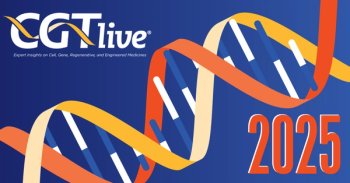
Capmatinib Trial Targets New Molecular Subsets of Patients in NSCLC
An ongoing phase II, four-cohort trial involving capmatinib (INC280), an oral MET inhibitor, will determine the clinical activity of the agent in pretreated patients with advanced non-small cell lung cancer who have undergone one or two lines of therapy.
Rebecca Suk Heist, MD, MPH
Although clinicians have made significant progress in understanding non—small cell lung cancer (NSCLC) biology and the role of targeted therapies, further clinical research must be performed to identify new molecular subsets of patients who are likely to benefit from personalized care.
An ongoing phase II, four-cohort trial involving capmatinib (INC280), an oral MET inhibitor, will determine the clinical activity of the agent in pretreated patients with advanced NSCLC who have undergone one or two lines of therapy. Patients will be stratified according to MET amplification and MET exon 14 skipping mutation.
“There are multiple MET inhibitors that are undergoing investigation and are currently available,” said Rebecca Suk Heist, MD, MPH, an assistant professor at Harvard Medical School and medical oncologist at Massachusetts General Hospital who is participating in the trial as a site investigator. “But we still don’t fully understand these agents’ activities in large populations and in various cohorts.”
The MET proto-oncogene, whose primary ligand is hepatocyte growth factor (HGF), has been the subject of ongoing clinical research, said Heist. It has been observed that prolonged or continuous activity of the receptor leads to excessive cell proliferation and is related to the development or progression of neoplastic disease. There have been extensive preclinical and clinical studies carried out to elucidate the mechanism of the MET/HGF inhibitory pathway in lung cancer and other solid malignancies. However, questions still remain regarding how to best target this pathway in NSCLC.
Determining which subset of patients with NSCLC would benefit from MET inhibition therapy using a single agent or in combination is the goal of ongoing research. Abnormal MET activation in cancer correlates with poor prognosis, and aberrantly active MET triggers tumor growth, formation of new blood vessels that supply the tumor with nutrients, and metastasis through several cell-signaling pathways.
MET mutations leading to exon 14 skipping are also an actionable target in NSCLC. Paik et al demonstrated that genomic alterations that promote this aberration lead to oncogenic MET activation, thus highlighting a new therapeutic strategy for the 4% of lung adenocarcinoma patients whose tumors harbor this previously underappreciated genetic alteration.1
Capmatinib has demonstrated strong evidence of antitumor activity in an ongoing phase I trial (NCT01324479) in patients with MET-mutated advanced cancers. Early results from the doseescalation study indicated that 3 of 6 patients with EGFR wild-type NSCLC participating in the study experienced a partial response with single-agent capmatinib.2
Cohorts Stratified by Gene Copy Number
The drug was well tolerated across the entire study population (N = 33). The most common all-grade adverse events (AEs) suspected of being related to capmatinib were decreased appetite, nausea, vomiting, and fatigue. AEs of grade 3-4 severity were rare.In the phase II trial (NCT02414139), patients are prescreened for MET amplification and mutation status, after which they are assigned to one of four cohorts depending on the gene copy number (GCN): MET GCN ≥6; MET GCN ≥4 and <6; MET GCN<4; and MET exon 14 skipping mutation regardless of GCN status. The prescreening can occur while patients are receiving other therapy, said Heist. “The exon 14 skipping arm was added because it has grown as a targetable alteration in lung cancer and may be responsive to MET inhibitors,” said Heist.
Eligible patients must be aged ≥18 years with stage IIIB/IV NSCLC that is ALK-negative and EGFR wild-type. They also must have Eastern Cooperative Oncology Group performance status scores of 0—1. Capmatinib will be administered twice daily on a continuous dosing schedule 12 hours apart. Each cohort will contain about 69 patients, for a total enrollment of about 276 patients.
The primary endpoints are the overall response rate and the proportion of patients with a complete or partial response as assessed by blinded independent review. Secondary endpoints include duration of response, progression- free survival, and overall survival.
“I do think MET is a targetable alteration in lung cancer,” Heist said. “As we have seen with other targets, we can change the natural history of a person’s disease if we are able to hit that target effectively. The hope from this study is that there will emerge a defined cohort in which people will derive a significant benefit.”
References
- Paik PK, Drilon A, Fan PD, et al. Response to MET inhibitors in patients with stage IV lung adenocarcinomas harboring MET mutations causing exon 14 skipping. Cancer Discov. 2015;5(8):842—849.
- Bang YJ, Su WC, Nam DH, et al. Phase I study of the safety and efficacy of INC280 in patients with advanced MET-dependent solid tumors. J Clin Oncol. 2014;32:52(suppl; abstr 2520).
Newsletter
Stay at the forefront of cutting-edge science with CGT—your direct line to expert insights, breakthrough data, and real-time coverage of the latest advancements in cell and gene therapy.




